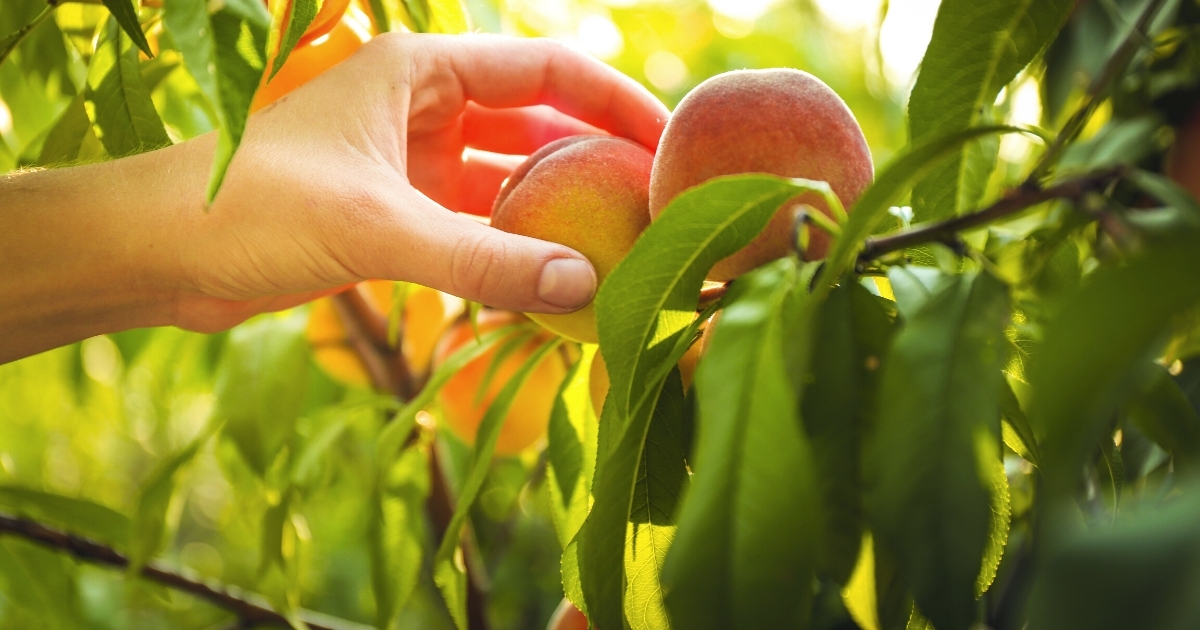
Category: Cooperative Extension

A homeowner's guide to fruit trees
March 24, 2021 Written by Gordon Johnson, Ph.D. (Extension Specialist - Fruit & Vegetable Program)
What you need to know!
Many gardeners would like to grow their own apples, pears, peaches, or cherries. However, growing tree fruit is one of the more challenging endeavors for the hobbyist.
The major tree fruits are grouped into two categories: pome fruits and stone fruits. The pome fruits include apples and pears and share many cultural similarities and pest problems. The other major group is stone fruits (peaches, plums, apricots, nectarines and cherries), sharing many cultural similarities and pests.
Choosing a fruit type and variety is the first critical step. Apples have many insect and disease issues; choosing varieties with scab and fire blight resistance is essential for the home orchard. Similarly, pears (both European and Asian types) should have fire blight resistance. Peaches and nectarines should have bacterial spot resistance.
Tree fruit such as apples and pears and some sweet cherries and plums require cross-pollination, so several varieties will be needed to be planted for fruit production. In contrast, peaches, apricots and nectarines are self-fruitful. Each variety will have a specific harvest window of less than two weeks. To extend the harvest, multiple varieties will be needed.
Tree fruit success also requires proper planting, training, pruning and pest management (insects, diseases, wildlife).
Purchase well-grown, heavily rooted, one-year-old, grafted plants from a reputable nursery. Most tree fruits are grafted onto a separate rootstock that is hardier and more pest-resistant than the root system of the desired cultivar. Dwarfing rootstocks are available for apples and cherries, which will shorten the time to the first full harvest and reduce plant size and the need for ladders to harvest. Whips are preferred (no branches are established); however, feathered trees (with some branches) can also be used.
Order your trees during the winter and have them delivered right before you are ready to plant in early spring (March-April).
The planting site in the home landscape should be full sun, well-drained, and not in a low-lying area. With multiple trees, adequate distance should be given so trees are not in competition and will allow for developing into full size. Dedicate a space in the landscape to tree fruits rather than using them as specimen plants in the yard.
Tree fruit success also requires proper planting, training, pruning and pest management (insects, diseases, wildlife).
Dormant fruit trees can be planted in the spring as soon as the ground can be worked. As soon as the plants arrive, inspect for any signs of damage. Trees to be held for several days prior to planting should be placed in a cool area (not freezing) with the roots covered with moist soil, sawdust, or sand. Never permit the roots to become dry. For bare-root plants, place the trees in water so that all the roots are covered. Allow the trees to absorb water for up to 4 hours.
The hole in which each tree is to be planted should be large enough to accommodate all of the tree’s root system. Grafted or trees should always be planted, so their union is above the soil line. If potted plants are used, shake all media off the root system before planting.
To plant, place the tree in the hole and add 4 to 6 inches of soil to the hole while at the same time gently jiggling the tree up and down the fill the hole to within 3 to 4 inches of the top. Tamp the soil firmly, then add the remaining soil up to the ground line, then water to wet the planting hole and roots thoroughly. Add a tree guard while making sure to bury the bottom of the guard 1 to 2 inches into the protection against rodents. Do not put fertilizer or compost in the planting hole. Apply a small amount of fertilizer two weeks after planting at least 6 inches from the trunk.
In the first year, whips should be pruned at a height to promote bud break and establish the bottom branches (in feathered trees, prune off any branches that you consider too low to maintain). Most nurseries will provide information on how to do this. The shape of the tree will be determined by how you manage branching. In general, there are two primary tree fruit shapes, a central leader used for apples and pears (one main trunk with branches coming from the main trunk) and a vase shape with no leader and 3-4 stems allowed to become the scaffold used for peaches and nectarines (the tree middle will be open).
In subsequent years, trees will be pruned to maintain these shapes and branching patterns and to promote fruiting. Peaches and nectarines will fruit on last year’s growth. Apples, pears, plums and apricots fruit on two years or older wood and on fruiting spurs. Peaches and nectarines can be harvested in the third year, as can dwarf apples and cherries. Pears may take up to 5 years or more to produce fruit.
For all tree fruit, disease and insect management can be a significant challenge for the home gardener. Organic production is very challenging. Consult pest management guides for home orchards from the Extension Service in your area.
